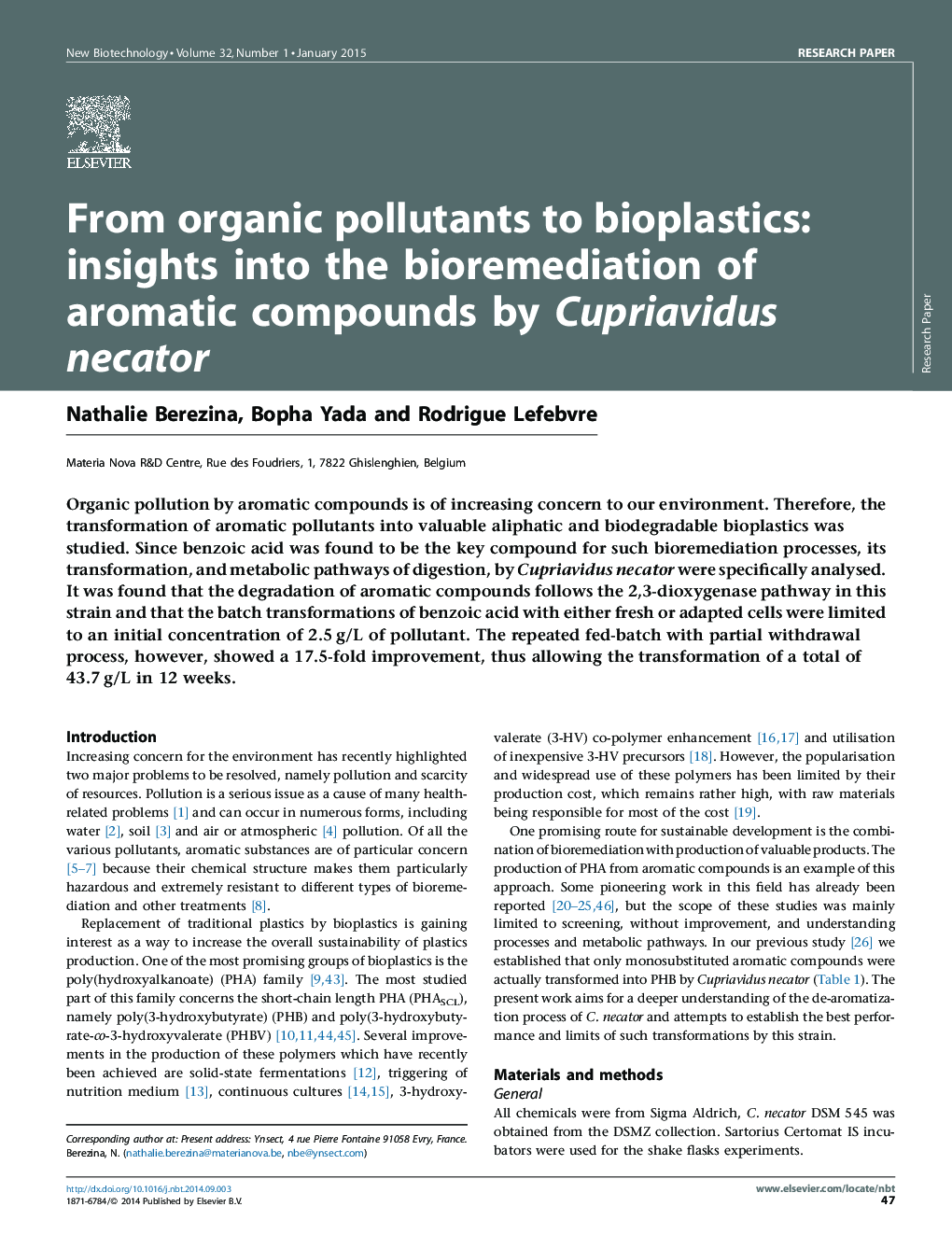| Article ID | Journal | Published Year | Pages | File Type |
|---|---|---|---|---|
| 10235024 | New Biotechnology | 2015 | 7 Pages |
Abstract
Organic pollution by aromatic compounds is of increasing concern to our environment. Therefore, the transformation of aromatic pollutants into valuable aliphatic and biodegradable bioplastics was studied. Since benzoic acid was found to be the key compound for such bioremediation processes, its transformation, and metabolic pathways of digestion, by Cupriavidus necator were specifically analysed. It was found that the degradation of aromatic compounds follows the 2,3-dioxygenase pathway in this strain and that the batch transformations of benzoic acid with either fresh or adapted cells were limited to an initial concentration of 2.5Â g/L of pollutant. The repeated fed-batch with partial withdrawal process, however, showed a 17.5-fold improvement, thus allowing the transformation of a total of 43.7Â g/L in 12 weeks.
Related Topics
Physical Sciences and Engineering
Chemical Engineering
Bioengineering
Authors
Nathalie Berezina, Bopha Yada, Rodrigue Lefebvre,
